Part Seven of the What Buddhism Taught Me About Travel series

Introduction: Why Gratitude Makes Every Journey More Meaningful
Travel isn’t just about seeing new places—it’s about how we see them. Cultivating gratitude through travel shifts our perspective, transforming ordinary moments into profound experiences. It makes a meal taste richer, a conversation with a stranger more profound, and even a delayed flight an unexpected pause for reflection. Like a well-packed suitcase, gratitude is an essential companion that enables us to navigate the world with appreciation rather than expectation.
Yet, we often overlook gratitude when moving from one destination to the next. When we focus on checking off sights or capturing the perfect photo, we risk missing the small but significant details that make travel special—the kindness of a local who offers directions, the beauty of an unplanned detour, or the simple joy of watching the world pass by from a quiet café. Gratitude reminds us to slow down and truly experience these moments, savouring the richness of travel beyond the itinerary.
More than just a fleeting feeling, gratitude is a mindset that travellers can cultivate before, during, and after their journeys. In this post, we’ll explore how practicing gratitude enhances our travels, deepens our connections, and transforms challenges into opportunities for growth. We can move through the world with greater appreciation, curiosity, and joy by shifting our perspective.
Understanding Gratitude in Travel: A Buddhist Perspective
We often think of gratitude as a fleeting emotion—an automatic response to kindness or good fortune. However, in Buddhist thought and within the context of mindful travel, gratitude is more than a reaction. It is an intentional practice—a way of seeing the world that transforms how we experience life. Rather than depending on external circumstances, genuine gratitude arises from a conscious choice to appreciate what is rather than fixate on what is missing. When cultivated consistently, gratitude deepens our connection to the present moment, enriches our interactions, and fosters a profound sense of fulfillment.
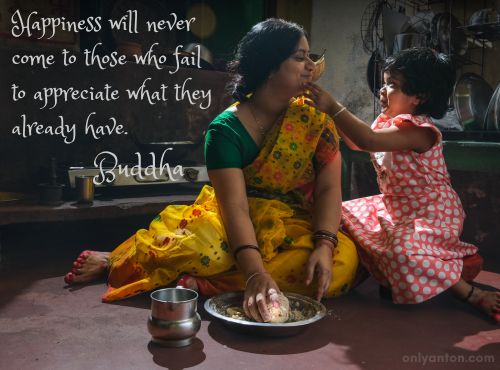
Gratitude in Buddhist Thought
In Buddhism, gratitude is not merely an abstract virtue but a guiding principle that shapes ethical living and spiritual awareness. Several key concepts illuminate the role of gratitude in Buddhist practice:
Kataññutā (Gratitude as Recognition of Kindness Received): In Buddhist teachings, gratitude is not just an emotion but a cultivated virtue known as kataññutā, meaning “to have a sense of what was done.” This practice of recognizing and appreciating kindness—both given and received—deepens mindfulness, fosters interconnectedness, and nurtures a heart of compassion. Gratitude is not passive; it is an active acknowledgment of our dependence on others and the gifts we receive from the world.
Santosh (Contentment): Dissatisfaction often arises not from what we lack but from our constant longing for more. Santosh teaches us to appreciate what is already present rather than chase what could be. When applied to travel, this mindset shifts our focus from accumulating experiences to fully embracing each moment as it comes.
Mudita (Sympathetic Joy): Gratitude is not only about our own experiences; it also includes the ability to rejoice in the happiness of others. In travel, mudita manifests as a sense of joy in witnessing local celebrations, appreciating the beauty of different cultures, and recognizing the shared humanity that binds us all.
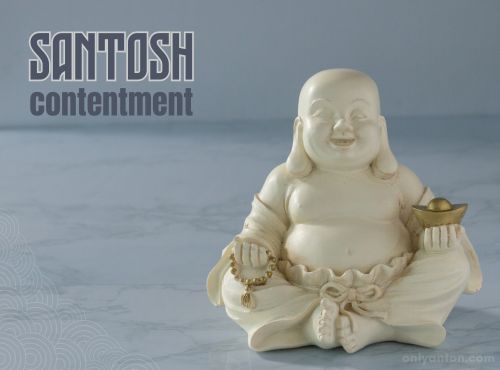
The Four Debts of Gratitude
Buddhism also speaks of the four debts of gratitude, which serve as a reminder that our existence and experiences are made possible by countless others:
- To all living beings → Respect for the cultures, people, and natural landscapes encountered while travelling and recognition that every interaction—whether with a local guide, a fellow traveller, or an animal in the wild—is an opportunity to practice gratitude.
- To parents and teachers → Acknowledging those who provided us with the knowledge, resources, and encouragement that make travel possible.
- To society and its caretakers → Gratitude for the infrastructure, hospitality, and traditions that sustain our journeys. The roads we walk, the meals we enjoy, and the safe places we rest all result from the efforts of countless unseen hands.
- To the Three Treasures (Buddha, Dharma, Sangha) → Seeing travel as more than movement from place to place, but as a spiritual journey of learning and self-discovery.

As travellers, we are the beneficiaries of generosity in countless forms. Recognizing this shifts our perspective from one of entitlement to one of deep appreciation. Instead of expecting, we acknowledge. Instead of taking for granted, we give thanks. By embodying gratitude in our travels, we cultivate a mindset that enables us to engage with the world—not as passive observers but as conscious and appreciative participants in the ever-unfolding journey.
How to Cultivate Gratitude Before Travelling
We should not leave gratitude to chance or wait to experience it only when something extraordinary happens. Like any practice, it begins with intention. By cultivating gratitude before a journey even begins, we set the stage for a more meaningful, enriching experience. Appreciation shapes our perspective, allowing us to find joy in grand adventures and the simplest of moments.
Setting Intentions
Travel is an opportunity, not a guarantee. The ability to explore new places, engage with diverse cultures, and step outside the routines of daily life is a privilege that not everyone has the opportunity to experience. By beginning our journey with an intentional mindset of gratitude, we train ourselves to focus on appreciation rather than expectation. Instead of asking, “What will this trip give me?” we might ask, “How can I be open to whatever this journey offers?”

Pre-Trip Reflection
Before setting foot on a plane, train, or trail, take a moment to reflect on the simple yet profound fact that you get to travel. Consider:
- What are you grateful for in the opportunity to travel?
- Who has helped make this journey possible through encouragement, logistical support, or shared enthusiasm?
- How can you approach this trip with a sense of wonder rather than expectation?
Acknowledging these things before departure fosters an immediate sense of appreciation, ensuring that gratitude becomes an integral part of the experience.
Mindful Packing: Carrying Gratitude with Us
Just as we carefully pack essentials for a trip, we can consciously “pack” gratitude, ensuring that it accompanies us along the way. This mindset serves as an anchor, helping us navigate travel’s inevitable highs and lows. A well-packed suitcase contains what is necessary and meaningful, not excessive or burdensome—just as a grateful traveller focuses on appreciation rather than unmet expectations.

Pre-Trip Rituals
For those looking to deepen their gratitude practice before travelling, simple rituals can be a powerful tool:
- Gratitude journalling: Writing down three things you are grateful for before a journey helps center your mindset.
- Setting a mindful intention: Take a moment to define the purpose of your trip beyond sightseeing. Is it to learn, to connect, to rejuvenate?
- Dedicating the journey to someone: Traveling in honour of a loved one—whether a mentor, family member or friend—adds depth to the experience, transforming it into something more than just personal fulfillment.
By integrating these small but powerful practices before a trip begins, we ensure that gratitude is not just something we feel along the way but something we bring with us—woven into the very fabric of our journey.
Practicing Gratitude in Travel: Finding Beauty in the Moment
Gratitude is not just about acknowledging what we have. It’s about fully experiencing and appreciating the present moment. Too often, we rush through travel, treating destinations as checklists rather than opportunities for deep connection. We transform ordinary moments into something extraordinary by slowing down and cultivating mindfulness.
The Role of Mindfulness in Gratitude
The more present we are, the more we recognize the small yet profound details that make travel meaningful. Gratitude thrives in awareness—when we pause to take in our surroundings rather than rushing to the next thing. In this way, mindfulness and gratitude are inseparable. Mindfulness anchors us in the now, allowing us to notice beauty, while gratitude magnifies our appreciation.
A journey consists of fleeting, often unremarkable moments. Yet, when viewed through the lens of gratitude, even the simplest experiences become memorable.
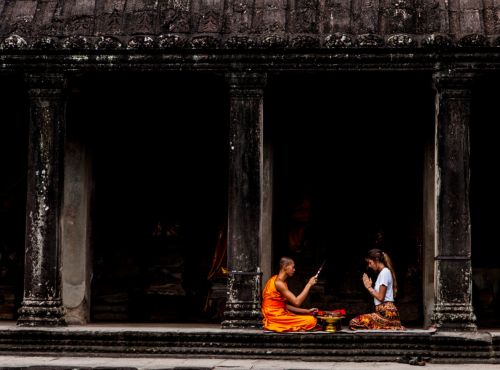
Savouring Small Details
- A warm meal in an unfamiliar place—the richness of a dish is savoured slowly, appreciating the effort and tradition behind it.
- A kind gesture from a stranger – a shopkeeper’s smile, a helpful local offering directions, a shared laugh despite a language barrier.
- The first glimpse of a sunrise in a new city – the hush of early morning, the colours shifting across the skyline, the quiet magic of witnessing a new day.
When acknowledged with gratitude, these moments become the heart of our travel memories.
Practicing Sampajañña (Clear Comprehension)
Mindfulness isn’t just about noticing; it’s about understanding. In Buddhist practice, sampajañña refers to clear comprehension—not just seeing an experience but being fully conscious of why we appreciate it.
- Instead of passively admiring a beautiful temple, we can reflect on the centuries of craftsmanship and devotion that built it.
- Instead of merely noting a local custom, we can consider its more profound cultural significance.
Through sampajañña, we don’t just experience beauty—we comprehend its depth and meaning.
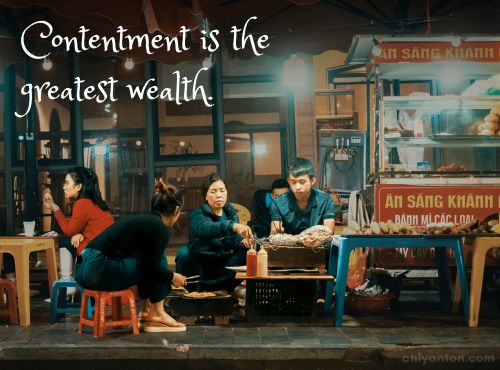
Sensory Awareness: Gratitude Through the Senses
Engaging all five senses enhances our appreciation of the world around us. When we focus on how things feel—how the breeze carries a scent of jasmine, how cobblestones feel beneath our feet, how a city’s hum changes from morning to night—we cultivate gratitude for the richness of each experience.
Connection to Yoniso Manasikāra (Wise Attention)
Where we place our attention shapes our travel experience. Yoniso manasikāra—wise attention—encourages us to direct our awareness toward gratitude instead of comparison or expectation.
- Instead of thinking, “This isn’t as impressive as I thought it would be,” we can shift to, “What can I appreciate about this moment?”
- Instead of envying another traveller’s itinerary, we can focus on the uniqueness of our own journey.
With mindfulness, sampajañña, and yoniso manasikāra, we move beyond passive observation into deep, intentional gratitude—where each moment, however small, becomes a gift.
Travel Challenges & Gratitude: Embracing Setbacks with Grace
Travel rarely goes exactly as planned. Flights are delayed, hotel bookings get mixed up, and unexpected obstacles arise. Yet, these moments—often viewed as frustrations—are also opportunities for growth. How we respond to these challenges determines the quality of our journey. When we cultivate gratitude, we shift from viewing difficulties as disruptions to recognizing them as an integral part of the experience.
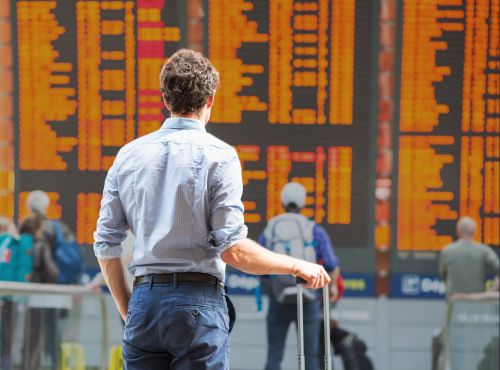
Reframing Challenges as Lessons
Every setback offers a choice: frustration or perspective. Instead of resisting what is beyond our control, we can meet challenges with acceptance and appreciation. Gratitude allows us to step back, take a breath, and ask, “What is this moment teaching me?”
Some of the most meaningful travel experiences are those that didn’t go according to plan. A missed train might lead to an unexpected conversation. A lost bag might teach us how little we truly need. A language barrier might remind us of the kindness in human connection that transcends words.
Common Travel Struggles
- Language barriers – Struggling to communicate can be frustrating, but it also presents an opportunity to appreciate patience, creativity, and the generosity of strangers who try to help.
- Lost luggage – Instead of focusing on what’s missing, we can focus on what we still have: our safety, our experience, and the kindness of those who offer assistance.
- Missed connections – A delay or detour might reveal a hidden gem we wouldn’t have otherwise encountered.
When we practice gratitude, we often find that what remains is more valuable than what was lost.
The Already Broken Cup: Learning Gratitude Through Impermanence
A Buddhist monk once held up a beautiful, delicate cup and said, “To me, this cup is already broken.”
Confused, his student asked, “What do you mean?”
The monk replied, “I enjoy this cup. I drink from it. It holds my water or tea admirably. Sometimes, it reflects the sunlight beautifully. But when I place it on the shelf, and the wind knocks it over, or I accidentally drop it, I say, ‘Of course.’ Because I understood, from the beginning, that it was already broken. That’s why I cherish it now.”

The lesson? Everything we love—every experience, every moment—is already impermanent. Travel, too, is like the monk’s cup. It is fleeting, unpredictable, and full of surprises. Flights will be delayed. Plans will change. Memories will fade. When we accept this truth, we stop resisting change and start embracing the journey. Each moment becomes more precious. Gratitude, then, is not about holding on but about fully embracing what is, knowing it will pass.
Kintsugi & The Beauty of Imperfection
In Japan, broken pottery is not discarded—it is repaired with gold. This ancient practice, known as kintsugi, does not conceal cracks but instead highlights them, transforming flaws into works of art. The idea is simple yet profound: what is broken is not ruined—it is transformed.
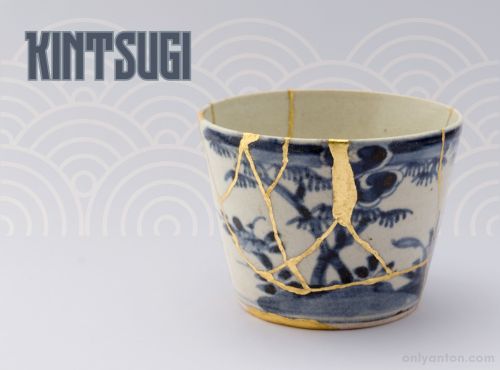
This philosophy mirrors the way gratitude reshapes our perception of setbacks in travel. Rather than seeing mishaps as things that “ruin” a trip, we can view them as experiences that enrich it. The most meaningful journeys are not the ones that go perfectly but the ones that leave golden lines in our memory.
A Practical Mindset Shift
Instead of asking, “Why is this happening to me?” try asking, “What can I learn from this?”
Gratitude does not mean denying frustration—it means choosing not to be consumed by it. Every delay, every detour, every misstep holds something of value. When we learn to embrace challenges with grace, we stop fighting the journey and start truly experiencing it.
Connecting with Locals and Cultures
Gratitude in travel is not just about appreciating landscapes, architecture, or cuisine—it’s about recognizing the generosity of the people who welcome us into their world. A heartfelt conversation, a local’s recommendation, or a simple act of kindness can transform our experience of a place. However, for gratitude to be truly meaningful, it must extend beyond simply saying ‘thank you’—it must shape the way we interact with those we meet.
Practicing Kataññutā in Human Encounters
In Buddhist thought, kataññutā—the recognition of kindness received—is a cultivated virtue, not just a polite reaction. When travelling, we constantly benefit from the efforts of others: the street vendor preparing our food, the taxi driver navigating unfamiliar roads, the hotel staff ensuring our comfort, and the local artisans preserving their craft. Each of these interactions is an opportunity to practice gratitude.
Instead of treating locals as service providers, we can shift our mindset: “What can I learn from this person? What stories do they carry?” A meal at a small family-run eatery is more than just food—it is someone’s history, culture, and livelihood. When we acknowledge this, our interactions become richer, our gratitude more sincere, and our presence more respectful.

Letting Go of Entitlement
Modern travel often fosters a consumerist mindset: “What can I get? How can I make the most of this trip?” While there’s nothing wrong with wanting a rewarding experience, genuine appreciation begins with recognizing the privilege of travel itself.
No matter how budget-conscious or minimalist a traveller might be, the ability to explore the world is a gift not afforded to everyone. Many locals we meet on our travels may never have the opportunity to visit our home country. Gratitude reminds us that we are guests, not entitled consumers, and shifts our perspective from “What’s in it for me?” to “What can I contribute?”
Cultural Humility
Gratitude also means respecting cultures on their own terms, not as objects of fascination or comparison. Too often, travellers bring a subconscious sense of superiority—whether through the “saviour complex” (believing we must “fix” or “educate” a community) or through quiet condescension (“They should really modernize this place”).
Cultural humility challenges us to appreciate differences with genuine curiosity rather than judgment. Instead of expecting a destination to cater to our preferences, we can approach it as students—open to learning rather than imposing. After all, how dull would the world be if every place and culture operated precisely the same?
Practicing Mudita (Sympathetic Joy)
At times, travellers fall into cynicism—complaining about tourist crowds, long lines, or a place not feeling “authentic” enough. But instead of reacting with frustration, we can practice mudita, or sympathetic joy—taking pleasure in the happiness of others.
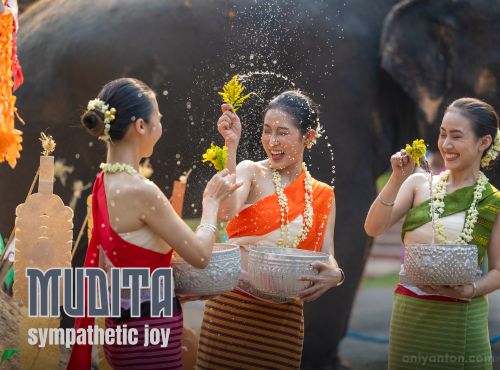
Seeing a local street performer bring smiles to a gathering crowd, witnessing a wedding celebration in a village square, or watching a child delight in a festival parade invites us to share in the joy around us. Travel is not just about our personal fulfillment. It’s about connecting with a vibrant, living world filled with people whose happiness is just as significant as ours.
By embracing kataññutā, letting go of entitlement, practicing cultural humility, and cultivating mudita, we transform travel into something deeper than a personal pursuit. Travel becomes a shared human experience woven together by gratitude.
Gratitude Through Giving Back: Responsible Travel Practices
Gratitude is not a passive feeling—it’s an active force that shapes how we engage with the world. When we truly appreciate the experiences, cultures, and people we encounter, gratitude naturally compels us to give back. Just as travel teaches us to receive with an open heart, it offers countless opportunities to contribute with intention and kindness.
Gratitude in Action
Travel often provides moments of profound appreciation—a breathtaking landscape, a warm interaction with a local, or an unexpected kindness that makes the journey smoother. But how do we respond to these moments? Gratitude isn’t just about feeling thankful; it’s about transforming that feeling into meaningful action.
A simple thank you is always valuable, but genuine gratitude expresses itself through reciprocity—supporting local economies, respecting cultural traditions, and being mindful of our impact. In Buddhism, the highest expression of appreciation is generosity, which leads us to dāna.
The Paramita of Dāna (Generosity)
Dāna, one of the pāramitās (perfections) in Buddhism, refers to selfless giving without expectation of return. This generosity can take many forms—material offerings, acts of service, or simply the gift of time and presence. In travel, dāna is about shifting our focus from consumption to contribution. Rather than taking from a destination, how can we leave something positive behind?
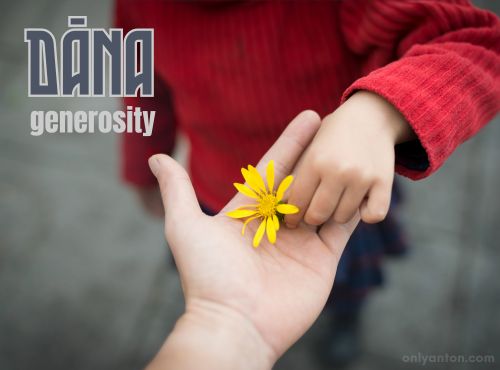
Ways to Give Back
While large-scale philanthropy has its place, meaningful generosity doesn’t have to be grandiose. Genuine gratitude is reflected in small, conscious choices that uplift the communities we visit:
- Supporting Local Businesses and Artisans: Choose locally owned guesthouses, restaurants, and markets instead of large chains. Invest in authentic, handmade crafts rather than mass-produced souvenirs.
- Choosing Ethical Tourism and Responsible Travel Experiences: Avoid activities that exploit people, wildlife, or the environment. Opt for sustainable tours that respect local cultures and ecosystems.
- Engaging in Small, Meaningful Acts of Kindness: A genuine compliment, a thoughtful tip, or simply treating people with dignity and respect can have a lasting impact. Avoid performative charity—giving should be about empowerment, not self-image.
The Ripple Effect of Gratitude
A traveller who moves through the world with gratitude naturally cultivates kṣānti, or patience and forbearance. Travel isn’t always smooth. There will be delays, discomforts, and inconveniences. But gratitude reminds us to approach these moments with understanding rather than frustration. Instead of resenting long lines or slow service, we can appreciate the effort behind the experience. Instead of seeing setbacks as interruptions, we can view them as invitations to slow down.
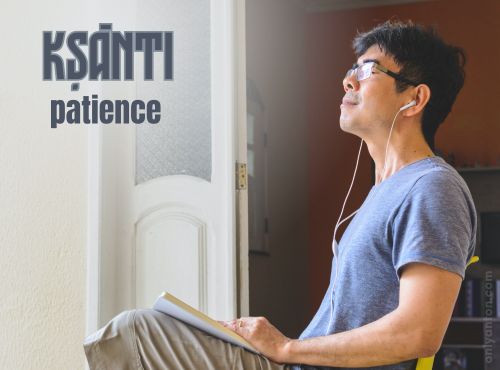
When we embrace gratitude as a way of being—not just an occasional feeling—we inspire generosity, awareness, and deeper connections. In this way, our travels become journeys across landscapes and journeys of the heart, leaving behind something far more valuable than footprints.
Gratitude Journalling and Reflection
Gratitude is most potent when it becomes a conscious, ongoing practice. While experiencing gratitude in the moment is valuable, recording it deepens our awareness and helps us savour those moments long after they pass. Travel moves quickly, and it’s easy to forget small but significant details. By keeping a gratitude journal, we capture fleeting experiences and transform them into lasting memories and insights.
The Power of Writing It Down
Journalling isn’t just about documentation—it’s about reflection. Writing down moments of gratitude allows us to process and appreciate them more fully. The simple act of noting down a meaningful interaction or an unexpected joy can shift our mindset toward appreciation. Journalling also trains us to actively seek moments of gratitude, making us more aware of the kindness, beauty, and serendipity that travel provides.
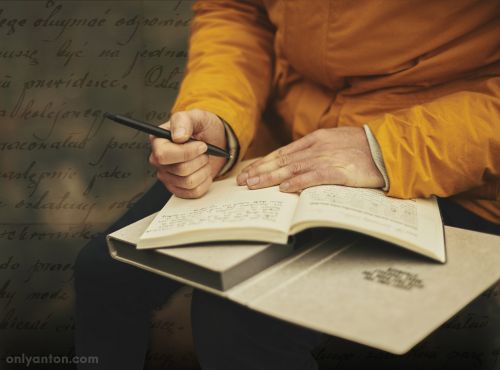
Simple Travel Journal Prompts
A gratitude journal doesn’t need to be elaborate. A few sentences or bullet points at the end of each day can be enough. Here are some prompts to guide your reflections:
- What is one small detail I noticed today that I am grateful for?
- Who has shown me kindness on this journey?
- What unexpected challenge led to a meaningful experience?
- What aspect of this destination will I miss the most?
- How has this trip changed my perspective on something?
Gratitude as a Post-Trip Practice
The practice of gratitude shouldn’t end when the journey does. Reflecting on past travels allows us to relive meaningful experiences with a deeper appreciation. Sometimes, moments that seemed insignificant at the time take on greater meaning in hindsight.
For example, a delayed flight might have initially felt frustrating, but looking back, you may realize it gave you an opportunity for a deep conversation with a fellow traveller. A minor inconvenience might have led you to an unexpected adventure. Revisiting these moments through journalling fosters a sense of appreciation for the journey as a whole—flaws and all.
In the end, cultivating gratitude through travel isn’t just about being thankful in the moment; it’s about shaping a perspective that lasts long after we’ve returned home.
Personal Reflections on Gratitude
Gratitude often begins where assumptions end. I learned this lesson over countless meals in small, family-run restaurants across China—places with no frills, no polished service, and no illusion of catering to foreign expectations. Instead of cushioned chairs, there were short plastic stools—comically too small for someone of my height. Instead of hovering servers, there were brisk, no-nonsense exchanges between diners and staff.
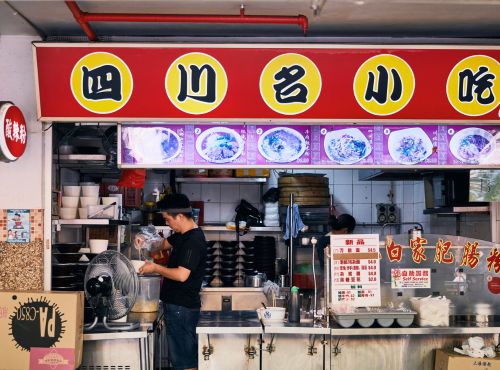
Unfamiliar Customs
At first, I found the interactions jarring. Service is often subtle in the West, with quiet attentiveness and unspoken cues. Here, diners called out their orders loudly. If they wanted more rice, they didn’t wait for someone to notice—they raised an arm and shouted, “Mi fan!” (rice). When it was time to pay, there was no polite waiting for a bill to arrive. One bluntly called out, “Lao ban! Mai dan!” (“Boss! Pay!”). It felt abrupt, almost rude—until I understood the rhythm. These restaurants were small, busy, and often understaffed. Efficiency, not courtesy as I knew it, was the guiding principle. Once I let go of my preconceptions, I found myself appreciating the system for what it was: direct, practical, and communal.
Another lesson came when paying the bill. A full meal—several dishes, rice, and a drink—often costs the equivalent of just a few dollars. At first, I would wait for my exact change, reluctant to “overpay.” However, over time, I gained a clearer perspective. The small amount I left behind—a sum insignificant to me—meant much more to the waitstaff or the family running the restaurant. Gratitude is more than saying “thank you.” It’s a recognition of how privilege and generosity intersect.
The Lesson
This lesson was repeated in Nicaragua, the Philippines, Vietnam, and beyond. Most people are not trying to scam or take advantage of you. They are simply trying to make a living. A shift in mindset—from suspicion to appreciation—made all the difference. When I approached these experiences with gratitude rather than entitlement, I saw not just transactions but shared human moments.
In the end, gratitude in travel isn’t just about the extraordinary. It’s about seeing the ordinary with new eyes.
Conclusion: Carrying Gratitude Forward
Gratitude transforms the way we experience the world. It turns fleeting moments into profound memories, frustrations into lessons, and ordinary encounters into opportunities for connection. When we cultivate gratitude in travel, we move beyond mere sightseeing—we engage more deeply, appreciate more fully, and approach each journey with a sense of wonder rather than expectation.
By shifting our mindset, we come to see that every meal shared, every challenge faced, and every kindness received is a gift. Travel, after all, is not just about where we go but how we move through the world. And when we travel with gratitude, we leave not just footprints but moments of generosity, understanding, and appreciation in our wake.
In the next installment of the What Buddhism Taught Me About Travel series, we’ll explore how gratitude naturally leads to generosity and compassion. Generous and Compassionate Journeys will examine how kindness enriches travel experiences—not just for ourselves but for the people and places we encounter along the way.
What About You?
Have you had a travel experience that taught you the value of gratitude? What’s a small moment from a past trip that you now appreciate more in hindsight? Share your thoughts in the comments—I’d love to hear your stories!
Glossary of Terms
These definitions provide a concise, accessible guide to the terms introduced throughout the series:
A
- Ānāpānasati: Mindfulness of breathing, a meditative practice focusing on the breath to cultivate awareness and calm.
- Anattā: Non-self, the understanding that there is no fixed, permanent self.
- Anicca: Impermanence, the idea that all things are in constant change.
- Appamada: Diligence or heedfulness, maintaining mindfulness and ethical awareness in daily actions.
- Avidyā: Ignorance or misunderstanding, the lack of true knowledge obscuring reality.
C
- Cankama: Walking meditation, a mindful practice of slow, deliberate walking to develop focus and presence.
- Chanda: Wholesome desire, a positive motivation rooted in ethical intention.
D
- Dāna: Generosity, the practice of giving freely without expecting anything in return, one of the six paramitas.
- Dharma: Teachings or truth, often referring to the teachings of the Buddha.
- Dukkha: Suffering or dissatisfaction, central to the Buddhist worldview.
K
- Karma: The principle of cause and effect through intentional actions.
- Karuṇā: Compassion, the heartfelt wish to alleviate the suffering of others.
- Kataññutā: Gratitude, the recognition and appreciation of kindness received, cultivated as a virtue in Buddhist practice.
- Kaya Sati: Mindfulness of the body, awareness of bodily sensations, posture, and movement.
- Kintsugi: The Japanese art of repairing broken pottery with gold, symbolizing the beauty of imperfection and resilience.
- Kṣānti: Patience and forbearance, the ability to endure difficulties with calmness and understanding.
M
- Madhyama Pratipada: The Middle Way, avoiding extremes of indulgence and asceticism.
- Metta: Loving-kindness, a practice of cultivating goodwill toward all beings.
- Mudita: Sympathetic joy, taking happiness in the success and well-being of others.
N
- Nirvana: The cessation of suffering and the end of the cycle of rebirth.
P
- Paramita: Perfection or transcendental virtue, qualities such as generosity, patience, and wisdom that lead to enlightenment.
- Pratītyasamutpāda: Dependent origination, the Buddhist teaching that all phenomena arise in dependence on interconnected causes and conditions.
S
- Samatha: Calm, serenity, or tranquillity, a meditative state that quiets the mind and fosters inner peace.
- Sammā Kammanta: Right action, ethical conduct that avoids harm to others.
- Sammā Samādhi: Right concentration, the practice of focused, meditative absorption that fosters clarity and calmness.
- Sammā Sankappa: Right intention, the cultivation of thoughts guided by goodwill and wisdom.
- Sampajañña: Clear comprehension, mindful awareness of one’s actions, surroundings, and intentions.
- Sammā Sati: Right mindfulness, the cultivation of present-moment awareness with clarity and non-judgment.
- Sangha: The Buddhist community of monks, nuns, and lay practitioners who support one another in the path of practice.
- Santosh: Contentment, the practice of appreciating what is rather than longing for what could be.
- Satipatthana: The Four Foundations of Mindfulness—body, feelings, mind, and mental objects—forming the basis for insight and presence.
T
- Tanha: Craving or unwholesome desire driven by attachment and ego.
U
- Upadana: Clinging, attachment that leads to suffering.
- Upaya: Skillful means, using wisdom and compassion to adapt actions effectively.
- Upekkha: Equanimity, a state of balance and calmness amid life’s highs and lows.
V
- Vipassana: Discriminating insight, the practice of seeing things as they truly are through mindful observation.
- Viriya: Effort, the balanced energy and perseverance needed to cultivate positive qualities and sustain mindfulness.
- Vossagga: Letting go, releasing attachment to desires, outcomes, and fixed identities.
W
- Wu Wei: Effortless action, a Taoist concept of flowing naturally with life’s processes.
Y
- Yoniso Manasikāra: Wise attention, the skill of directing the mind toward wholesome thoughts and deeper understanding.
New terms will be introduced throughout the series as needed, offering deeper insights into the teachings relevant to travel.
Further Reading and Resources
Related Posts on Only Anton
If you enjoyed this post, you may find these earlier entries in the What Buddhism Taught Me About Travel series insightful:
- What Buddhism Taught Me About Travel: This introductory post explores how Buddhist teachings and wisdom can enrich mindful travel experiences. Embrace the journey, not just the destination.
- Managing Expectations in New Places: Part Two of the series offers insights into adjusting expectations to cultivate openness and reduce disappointment while travelling.
- Seeing Reality Where You Are: Part Three of the series explores how Buddhist teachings can help travellers see reality as it is, embrace impermanence, and cultivate mindfulness.
- The Art of Letting Go While Travelling: Part Four of the series shows how letting go can transform your travel experiences through mindfulness, resilience, and meaningful personal connections.
- Understanding Suffering Along the Path: Part Five of the series, reframing travel challenges as opportunities for growth through mindfulness and compassion.
- Mindfulness and Movement: Part Six of the series explores how staying present during travel deepens experiences and fosters appreciation for the journey.
- Mindful Travel: Finding Meaning in Our Journeys: A broader reflection on mindful travel, discussing the importance of intention, presence, and embracing spontaneity.
External Resources
This collection of external resources offers valuable insights into cultivating gratitude, both in travel and daily life.
Books
- The Wise Heart: A Guide to the Universal Teachings of Buddhist Psychology by Jack Kornfield (2009): A compassionate and accessible exploration of Buddhist psychology, offering practical insights on mindfulness, gratitude, and emotional balance. Find it at your library, browse online, or grab your copy here.
Articles
- “The Wisdom of Insecurity” by Jack Kornfield (September 2021): An excerpt from The Wise Heart discussing how embracing uncertainty with mindfulness and gratitude leads to greater peace and contentment. Read the article here.
- Buddhism A-Z: Gratitude, Lion’s Roar: A short and accessible overview of gratitude from a Buddhist perspective, including its role in practice and daily life.
- “The Lessons of Gratitude” by Thanissaro Bhikkhu, Lion’s Roar (December 2010): A Buddhist monk’s perspective on gratitude as a form of wisdom and an essential aspect of the spiritual path. Find the article here.
- “The Path of Gratitude” by Jeff Wilson, Lion’s Roar: Explores gratitude within Shin Buddhism, particularly through the practice of nembutsu and the mantra Namu Amida Butsu. Read more here.
- “Being Grateful: What the Buddha Taught About Gratitude” by Barbara O’Brien, Learn Religions (updated February 2019): A practical introduction to the role of gratitude in Buddhism, touching on key teachings and how they apply to everyday life. Find the full article here.




